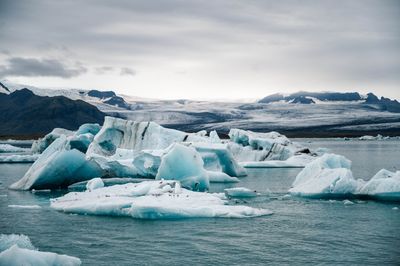For many coffee enthusiasts, the aroma and taste of a freshly brewed cup of coffee are irresistible. However, for various reasons, some individuals prefer to consume less caffeine or avoid it altogether. Enter decaffeinated coffee, a popular alternative that offers a way to enjoy the rich flavors of coffee without the stimulating effects of caffeine. In this blog post, we will delve into the fascinating world of decaf coffee and explore the methods used to remove caffeine while preserving the coffee's flavor profile.
Understanding Decaffeination Methods:
Decaffeination is a process that extracts the majority of caffeine from coffee beans, resulting in decaffeinated coffee.
There are several methods employed in the decaffeination process, each aiming to minimize the impact on the taste and aroma of the final product. Let's explore some of the common techniques used:
-
Solvent-Based Processes:
a. Direct Solvent Method:
One approach involves soaking the coffee beans in a solvent, typically methylene chloride or ethyl acetate. These solvents selectively bind to the caffeine molecules, separating them from the coffee beans. After an adequate extraction period, the solvent is removed, and the beans are steamed to eliminate any remaining traces of the solvent.b. Indirect Solvent Method:
In this method, the coffee beans are soaked in hot water, which extracts both the caffeine and flavor compounds. The resulting water, known as the green coffee extract, is then treated with a solvent (such as ethyl acetate or activated charcoal) to isolate and remove the caffeine. The solvent is separated from the water, and the now-decaffeinated beans are returned to the caffeine-free water to reabsorb the flavors they had lost during the initial extraction. -
Swiss Water Process:
The Swiss Water Process is a solvent-free method of decaffeination. It starts by soaking the beans in hot water to extract the caffeine and flavor compounds. The resulting green coffee extract is then passed through an activated carbon filter. This filter selectively captures the caffeine molecules while allowing the flavor compounds to pass through. The caffeine-free water, still containing the desired flavors, is used to extract caffeine from a fresh batch of beans, repeating the process until the beans reach the desired level of decaffeination. -
Carbon Dioxide (CO2) Method:
The CO2 method utilizes pressurized carbon dioxide in a supercritical state (having properties of both a liquid and a gas) to extract caffeine. The coffee beans are moistened and then exposed to the pressurized CO2, which selectively bonds with the caffeine molecules. The CO2 is then depressurized, returning to its gaseous state, and the caffeine is separated from the CO2. The beans are left with significantly reduced caffeine content.
Finalizing the Decaffeinated Beans:
After the decaffeination process, the coffee beans undergo drying and roasting, just like regular coffee beans. This final step is crucial as it allows the beans to develop the desired flavors and aromas. It is worth noting that decaffeinated coffee is not entirely caffeine-free, but rather it contains a reduced amount of caffeine compared to regular coffee. The specific caffeine content can vary based on factors such as the decaffeination method employed and the type of coffee bean used.
Taste and Considerations:
While the decaffeination process aims to preserve the original flavor profile, it can alter the taste to some extent. Some coffee enthusiasts claim that decaf coffee might have a slightly milder or less complex flavor compared to regular coffee. However, advancements in decaffeination techniques have significantly improved the overall quality and taste of decaf coffee, making it an appealing option for those looking to limit their caffeine intake.
Curated Video:
Conclusion: Decaffeinated coffee offers a delightful alternative for coffee lovers who wish to enjoy the rich flavors and aromas of coffee without the stimulating effects of caffeine. Through various decaffeination methods like solvent-based processes, the Swiss Water Process, and the Carbon Dioxide method, the majority of caffeine is extracted from coffee beans while preserving the desired flavors. Although decaf coffee is not entirely caffeine-free, it provides a reduced caffeine content that caters to the preferences of individuals seeking a milder coffee experience. So, the next time you savor a cup of decaf coffee, appreciate the intricate science behind its creation and the efforts to deliver a satisfying caffeine-free beverage.
Discover More
Most Viewed
Nature never ceases to amaze us with its breathtaking beauty and natural phenomena. In this blog, we highlight ten fascinating natural events that attract travelers from around the world.
Read More
















